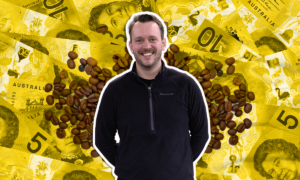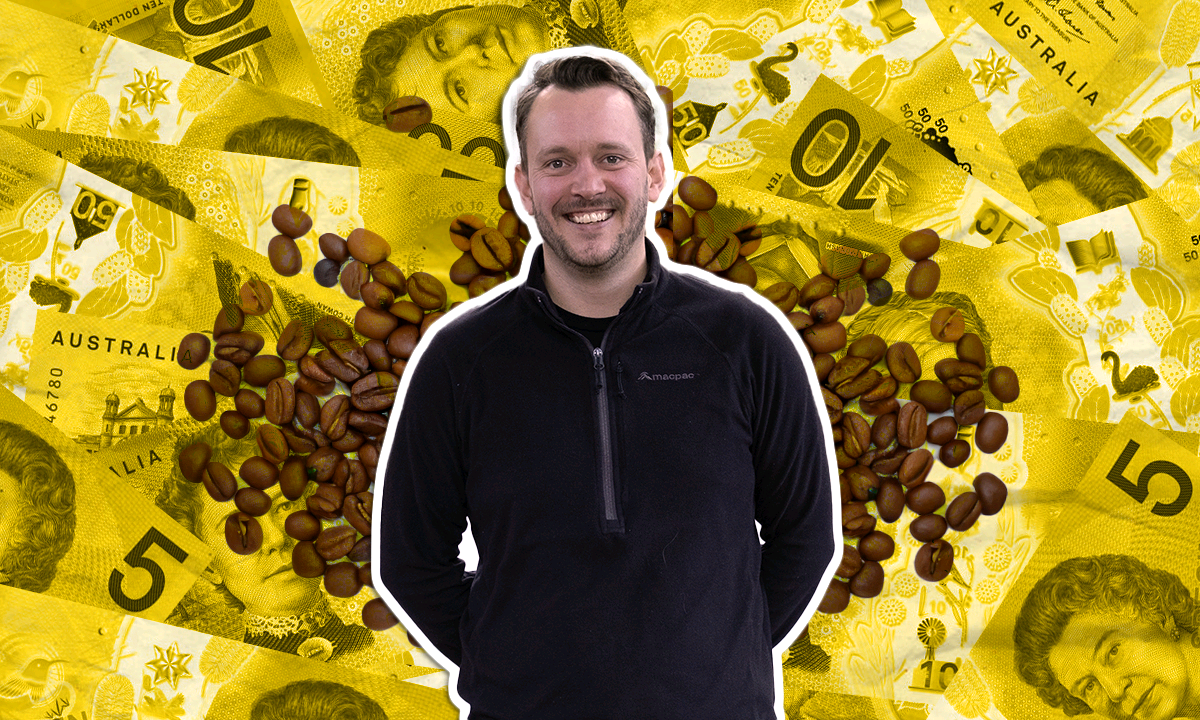CityMag delves further into our coffee culture, interviewing a local importer about why we should spend more for our caffeine fix.
As CityMag has covered in recent weeks, Adelaide roasters believe coffee prices should rise to reflect the increased expenses of creating a regular cup.
One roaster believes that a small coffee should cost at least $7, taking into account the whole cost of maintaining a café and roasting quality coffee beans.
According to David Train, Asia Pacific account manager of Ally Coffee, coffee culture is having a “challenge here in Australia”.
As a green coffee importer who supplies coffee to Adelaide roasters such as Coffee in Common, Kindred Coffee, and Monastery Coffee, as well as national and international roasters, he sees a much bigger issue hurting our coffee culture in general.
“We’re really spoiled with cafes and hospitality in general, but we also have some of the highest wages in the world,” David says.
“To produce a cup of coffee costs higher here [in Australia] than it does in most other countries in the world.
“Some of the ways in which people try to cut costs is to obviously cut the cost of goods, and that then trickles back down into the quality of coffee.”
SO WHAT’S GOOD QUALITY COFFEE?
What distinguishes superior quality coffee from the latter is the coffee bean scoring method, which determines whether coffee is classed as specialty or premium grade.
“Coffee itself is objectively scored out of 100,” explains David.
“To be classified as specialty grade, it must achieve a score of 80, which is accomplished by people known as Q Graders who complete a five-day course and exam [run by the Specialty Coffee Association].” Objectively scoring coffee is difficult, with a high failure rate.
“It’s to give a quality grading of the green coffee, not of the roasted coffee, [but] of the of the raw coffee.”
Companies like Ally Coffee, which connects roasters with responsibly grown coffee, rate the coffee and determine if it is specialty or not before giving it to roasters.
“Anything over 80 technically qualifies as specialty and the more points you have, the more expensive it gets,” David explains.
“It’s nothing like wine, where you see a lot of wine shows with scores of 98 or 97. For coffee, this is nearly impossible. If it scores more than 86 or 87 points, the coffee is superb.
“Anything over 90 is extremely rare and very expensive.”
David emphasizes that the scoring is based on objective worth, not subjective taste.
“Specialty will cost more because of the objective quality, not necessarily because you think it’s better than what I think it is because taste is subjective,” he says.
“You eat and drink what you like to eat and drink; some people like very dark roasted coffee, some people like very light roasted coffee, some people like it with milk, some people like it with caramel. Who cares?
“Our role is to be very objective with the facts, not to tell you what you should do with it, or how your customers need to drink it.”
David says another factor they take into account is the sustainability and traceability of the product, which again “generally can refer to higher quality and higher price”.
The good beans are going somewhere else.David, an importer, sees “the start of specialty coffee” in Asia.
“Australia’s had a really progressive coffee industry more or less since the 50s, when the first Italian immigrants came across with all their amazing machines and we really took off the espresso culture there,” according to him.
“Then, in the early 2000s, specialty coffee became somewhat of a norm, rather than a trend.
“But in most other regions, that wasn’t really a thing.”
David says in Southeast Asian regions, there’s a young population with a growing thirst for coffee who are “happy to pay for the quality”.
“So about 75% of the Southeast Asian population is under 40, so it’s a growing middle class, younger demographic,” he tells CityMag.
“The Philippines and Indonesia have a highly Islamic population. So they’re drinking lots of coffee [rather] than alcohol, so that appetite for coffee is humongous.”
According to David, each country in the region approaches coffee quality and pricing differently.
“Whilst in other regions, they tend to have traditional coffee [which is] fairly cheap, and quite rich and intense, and made with condensed milk sometimes,” he says.
“And then they have higher-end coffee and a strong point of differentiation, whereas in Australia, you can go to an incredible café like here [at Exchange], a pub, or a gas station and spend the same price with no real difference.
“Even though here, where we are at Exchange, you would expect and you will get a clearly better experience with coffee.”
The main problem David sees is “in Australia we’ve commoditised specialty coffee by making coffee so accessible”. He says being able to get coffee “anywhere” is “not necessarily a good thing”.
“So the issue in Australia is everywhere you go sells coffee: pub, bakery, bowling club, surf lifesaving club, café — everywhere sells coffee,” David says.
“The general consumer will not necessarily differentiate between, they’ll just remember ‘I like a latte’. They don’t know what brand they like, they don’t know the roaster or even the milk, but they’re like ‘I like to drink a latte with one sugar’.
“Even though they’ll go to a cafe they’ve never been there before, ‘latte one sugar’. Or they might go to the pub ‘latte one sugar’ and it’s not the same product.
“But we’ve kind of got it everywhere and it’s the same price.”
According to David, coffee is considered as “a necessity, when we should be viewing it as a luxury,” but consumers are uninformed of the costs associated with each coffee or how each cup is prepared.
He is concerned that the general quality of coffee is declining.
“In Australia, we haven’t kept up with adjusting our prices, so roasters can’t afford to really charge accordingly to cafes because the consumer is not willing to pay more,” he claims.
“As a result, they must seek for more cost-effective coffees, which effectively imply lesser grades or quality.
“So the only way in which the roaster can save money is to purchase lowergrades.”
WE JUST NEED TO START PAYING MORE
David agrees with Dawn Patrol co-owner Dom Ossa that a reasonable price for a small cup of coffee should be upwards of $7.
“You see in other countries. [Coffee’s] at least seven to 10 Australian dollars and most of those countries have lower cost of living than what we have here,” he says.
David says “to maximise the sustainability of these businesses, we need to be able to pay more for it”.
“Otherwise, we have to be happy with having lower-grade coffee,” he says.
“It’s not always a terrible thing that [lower-grade] coffee enters the country; it has its uses; it just may not taste as good subjectively and objectively.
“In our opinion, the quality won’t be as good.”
According to David, the snowball effect of low-quality coffee entering Australia means that “we will fall behind the rest of the world in terms of coffee quality.”
“In Australia, if we don’t shift, a lot of the producers and regions will still bring coffee to Australia, but it’ll be an afterthought,” according to him.
And because of just the sheer volume and upscale in Asia, Australia will get left behind if we don’t make a shift in our purchasing.
“There will still be coffee, it just might not be as good as it used to be.”
WHAT CAN WE, THE COFFEE CONSUMERS, DO TO PREVENT THIS FROM HAPPENING?
Although David claims that the inevitable decline in coffee quality in Australia is already underway as roasters become more “aware of their purchasing,” he believes the debate about coffee in general needs to change.
“It’s not just declaring, ‘Okay, from now on, we have to move from $4.50 to $7’ because the world will be outraged, but a progressive adjustment in that perspective. “I believe as a general consumer, they should ask more questions about coffee in general,” he says.
“I believe a consumer should have a general understanding of where it comes from and why it costs money.
“I think if you ask most people if they know where coffee comes from, I think we still have a blissful ignorance. Some people might even say Italy or some people don’t even know that coffee’s a fruit — it’s the seed of a fruit, it’s not even a bean.
“I think for a consumer to have a slightly general awareness as to where it comes from and as to maybe why it costs money.
“Australians are quite passionate at the moment about our groceries, wanting to make sure that the farmers are getting the correct price from Coles and Woolworths. Same thing in terms of coffee production.”
David says he understands getting people to pay $2 more is “probably not going to happen straightaway” but “inevitably people are going to have to pay more”.
We compare societies’ shift in perspective when it comes to sustainable clothing – and people more willing to spend more when they know it’s been ethically sourced. Yet David says people’s perspective is different when it comes to a cup of coffee, although it’s the same concept.
“[As an example], Exchange has here, maybe $40,000 worth of equipment on the bar; someone needs to pay for that,” he says.
“It’s quite an expensive operation to start and we take that for granted and we don’t question why. Why is the coffee more expensive? And the mainstream media doesn’t really cover it enough.”
GET RELATED CONTENTS ON: BLACKSPORTNEWS.CO.UK
